COVID-19 may have dealt retail and entertainment a blow, but the success of mixed-use still hinges on providing an experience, developers say. And considering that many projects long have incorporated generous amounts of open-air amenities like green space, restaurant patios and entertainment and event venues, mixed-use is positioned for continued success as people look for more outdoor activities.
Prior to the pandemic, mixed-use developers were emphasizing experience not only to attract office users, residents and hotel guests, but also to also bring in and keep consumers on property and to foster return trips. Tenants typically included a mix of local and national shops and restaurants, boutiques, services and movie theaters.
Still, as retail and movie house expansion has slowed, developers are considering alternatives, including medical users, storage and last-mile delivery users. In Brooklyn’s Industry City — a district of 16 repurposed, 19th century warehouses that contain retail, creative office and maker space — Whole Foods in September opened a 60,000-square-foot dark grocery store to fulfill online orders. That type of flexibility — along with the conversion of courtyards to outdoor dining spaces with heated tents, themes celebrating different countries and a mix of national and local experiential retailers — has helped Industry City maintain occupancy during the pandemic, says director of development Jim Somoza.
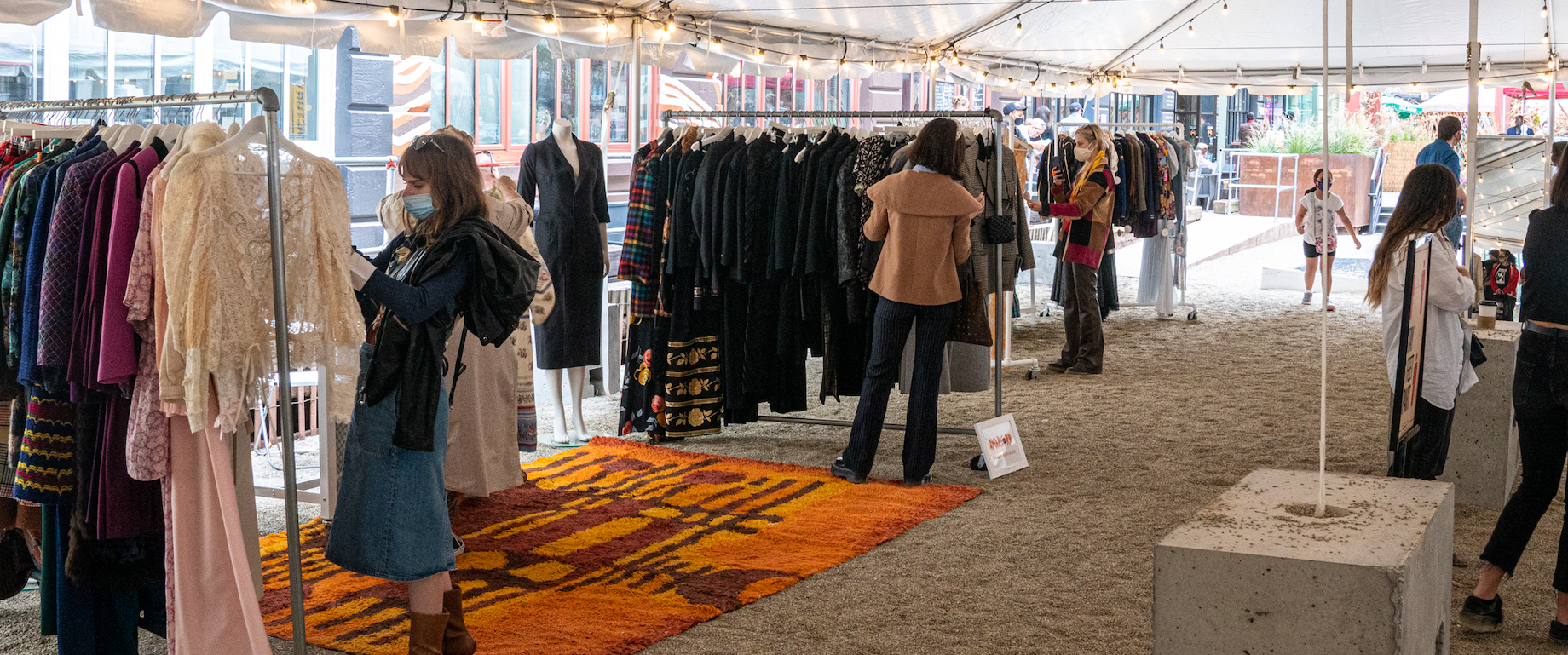
Shoppers browse apparel in Industry City's courtyard tents
In March, West Elm opened a furniture outlet store there, alongside retail offerings from a blacksmith to a boutique wine shop. “When people come to Industry City, they’re transported away for a little bit,” he said. “For months, we’ve been at about 80 percent of our weekend foot traffic — we didn’t want to do more than that for safety reasons — and we’ve only lost one store to COVID.”
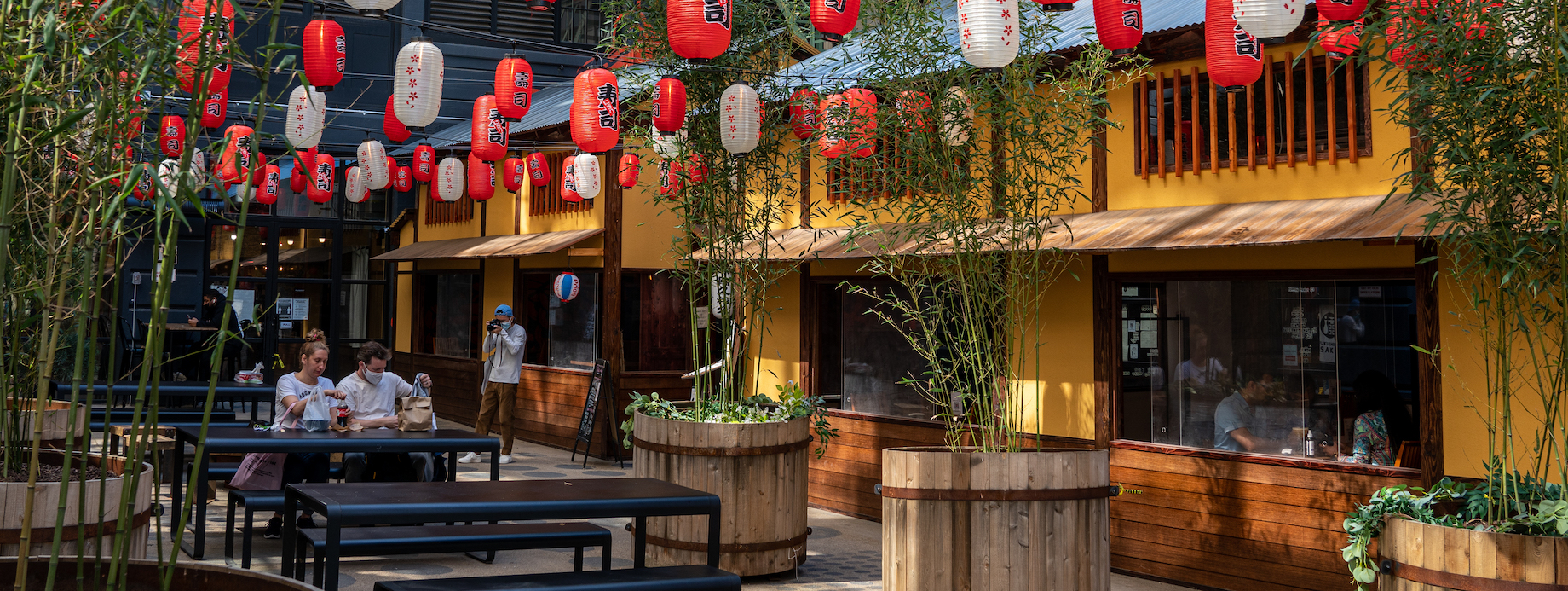
Brooklyn’s Industry City, also pictured at top, has created international themes to celebrate different countries and "transport" visitors
Keeping it local
Amid desires to create more intimate retail settings, mixed-use developers have become more selective about which national brands to include. Lakeview Community Partners, the developers of Lakeview Village in Mississauga, Ontario, is creating a retail town square. The nearly $5 billion planned mixed-use development, which is nearing final approvals from the city, will place as much as 1.8 million square feet of office, 8,000 residential units and 200,000 square feet of retail on the site of a former power plant on the shores of Lake Ontario.
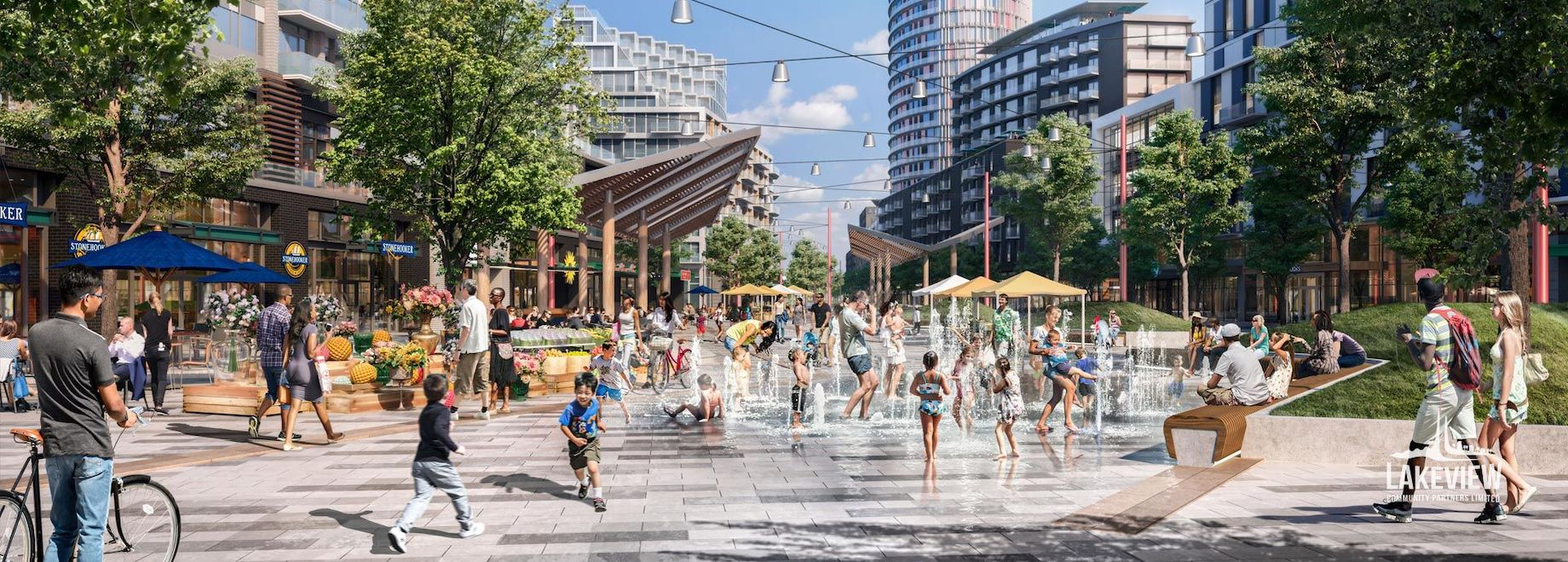
Lakeview Square, the retail town square planned for Mississauga, Ontario’s $5 billion Lakeview Village mixed-use development. Credit: Cicada Design. Copyright: Lakeview Community Partners Limited
Rather than depending on national, “consumptive” retailers, Lakeview Village developers are banking on proximity to the lake — as well as planned parks, green space and a cultural arts and events center — to attract visitors, residents and businesses, says Rob Spanier, president of Spanier Group, a mixed-use and placemaking advisor working with Lakeview Community Partners. “I have a fundamental belief that a smaller retail footprint with large and more generous outdoor spaces that complement indoor space and drive sales is the way to go. We’re looking for a mix of independent, non-national, best-in-class retailers. That doesn’t mean we’ll be ignoring or negating national users, but they will have to align with our vision.”
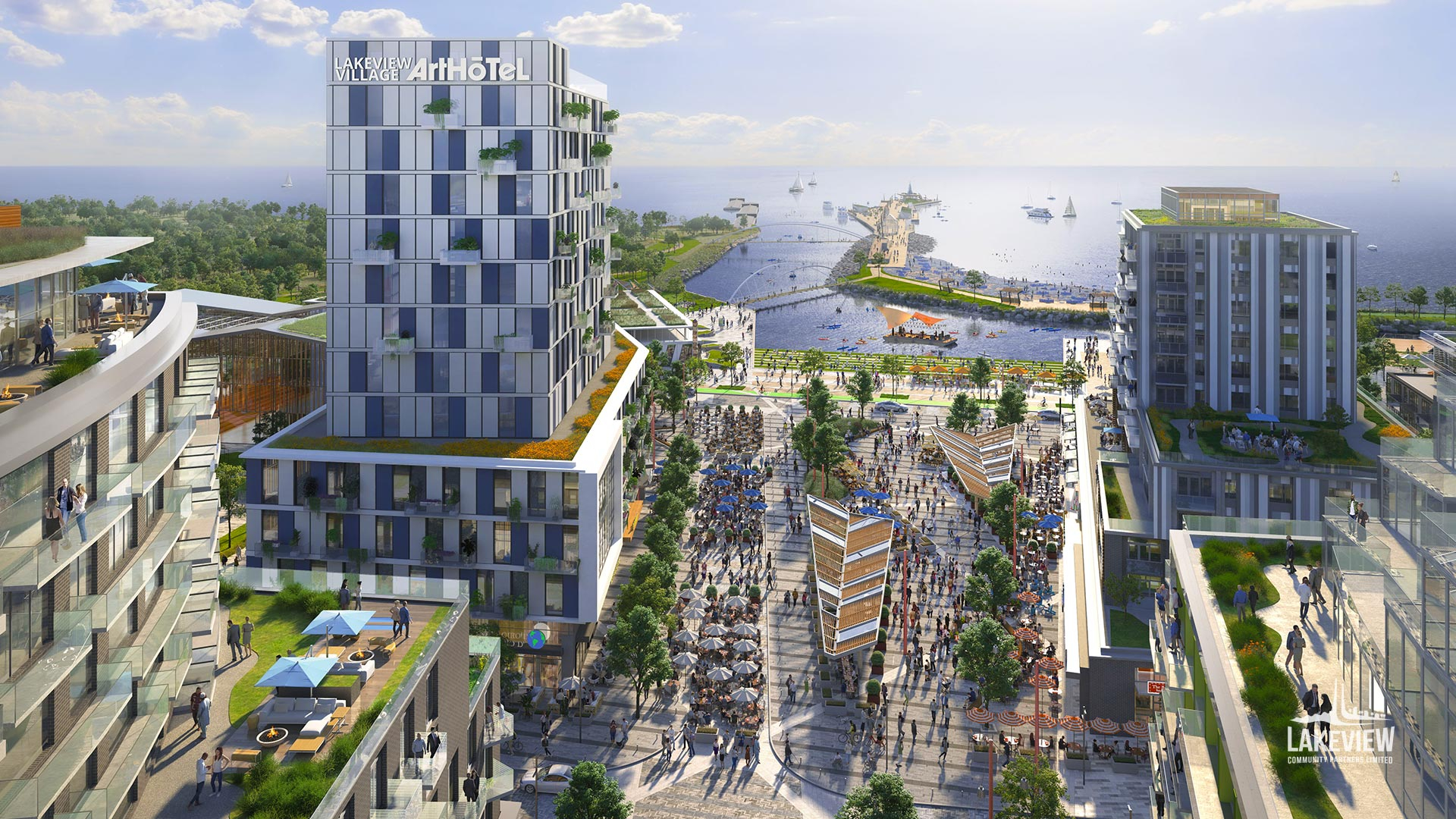
Rather than depending on national, “consumptive” retailers, Lakeview Village developers are banking on proximity to the lake — as well as planned parks, green space and a cultural arts and events center — to attract visitors, residents and businesses. Credit: Cicada Design. Copyright: Lakeview Community Partners Limited
Retail and experience within the larger development
At MidCity District in Huntsville, Alabama, an REI, Topgolf and soon-to-open Trader Joe’s beckon customers at the “front door” of the project, says Max Grelier, a co-founder of the developer, RCP Cos. The retail, dining and entertainment at the development eventually will total 450,000 square feet, and RCP intends to put the bulk of it in a downtown setting. It also wants to limit the amount of retail that’s big box. “We really wanted to focus on an activated Main Street that would run internally through the project and create value. … We thought that a 25,000-square-foot box was plenty big enough.”
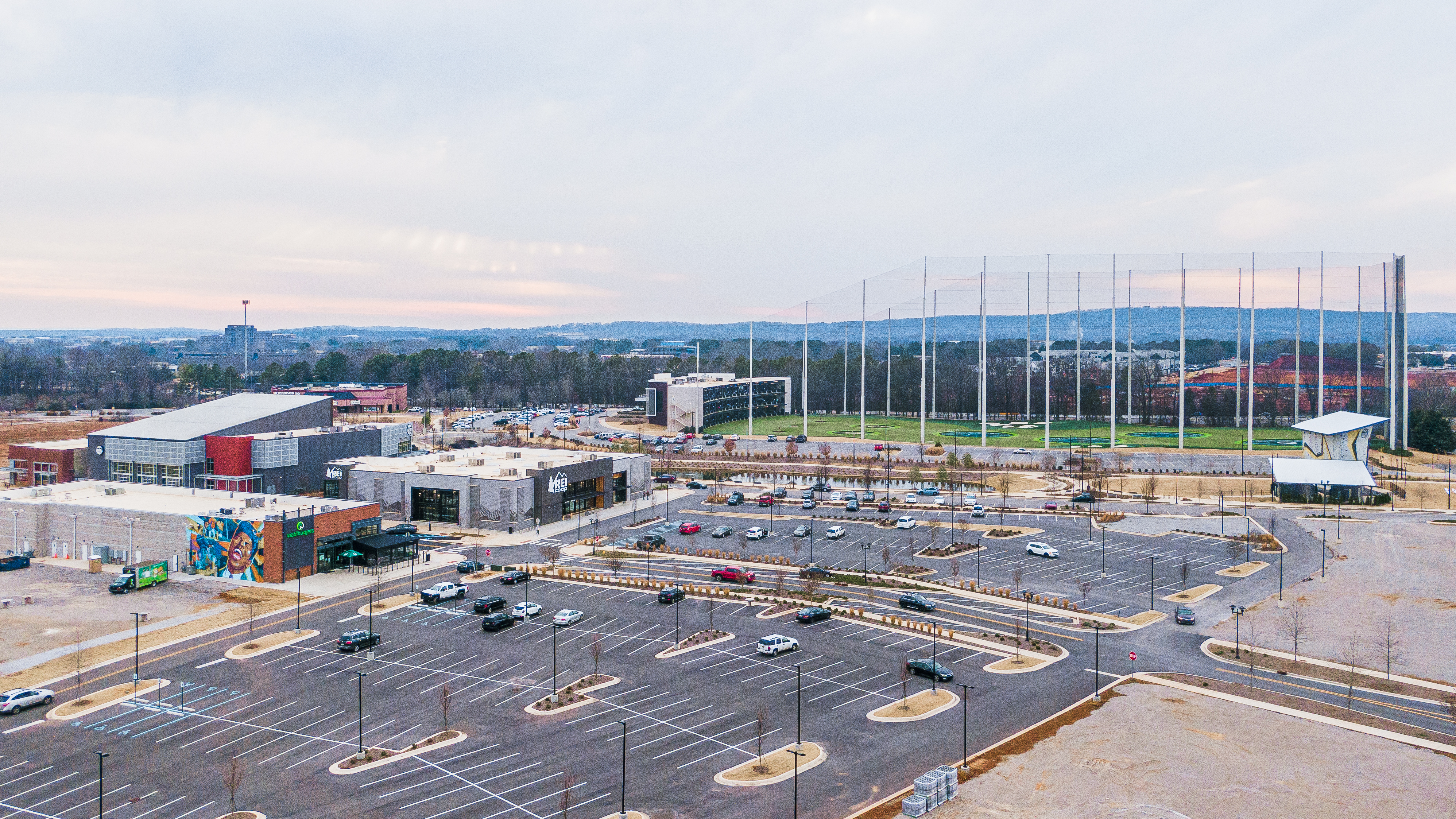
Topgolf and REI are among the 100,000 square feet of retail already completed at Huntsville, Alabama’s MidCity District, but the bulk of the 450,000 square feet of retail, dining and entertainment will come in the form of Main Street-style retail. Credit: Kelly Lopez
The $1 billion, 140-acre project, which is on the site of the former 1.1 million-square-foot Madison Square Mall, also will include 350,000 square feet of office; hotels; and as many as 1,200 residential units. But it’s the 40-acre public park, 8,500-seat amphitheater, plazas and programming that will be critical to generating traffic, Grelier says. Chief among those is The Camp, an outdoor bar, coffee shop and food truck attraction that features live music. “At the end of the day, MidCity needs to be a place where people want to hang out,” he said. “We don’t think you can rely on a traditional anchor to do that.”
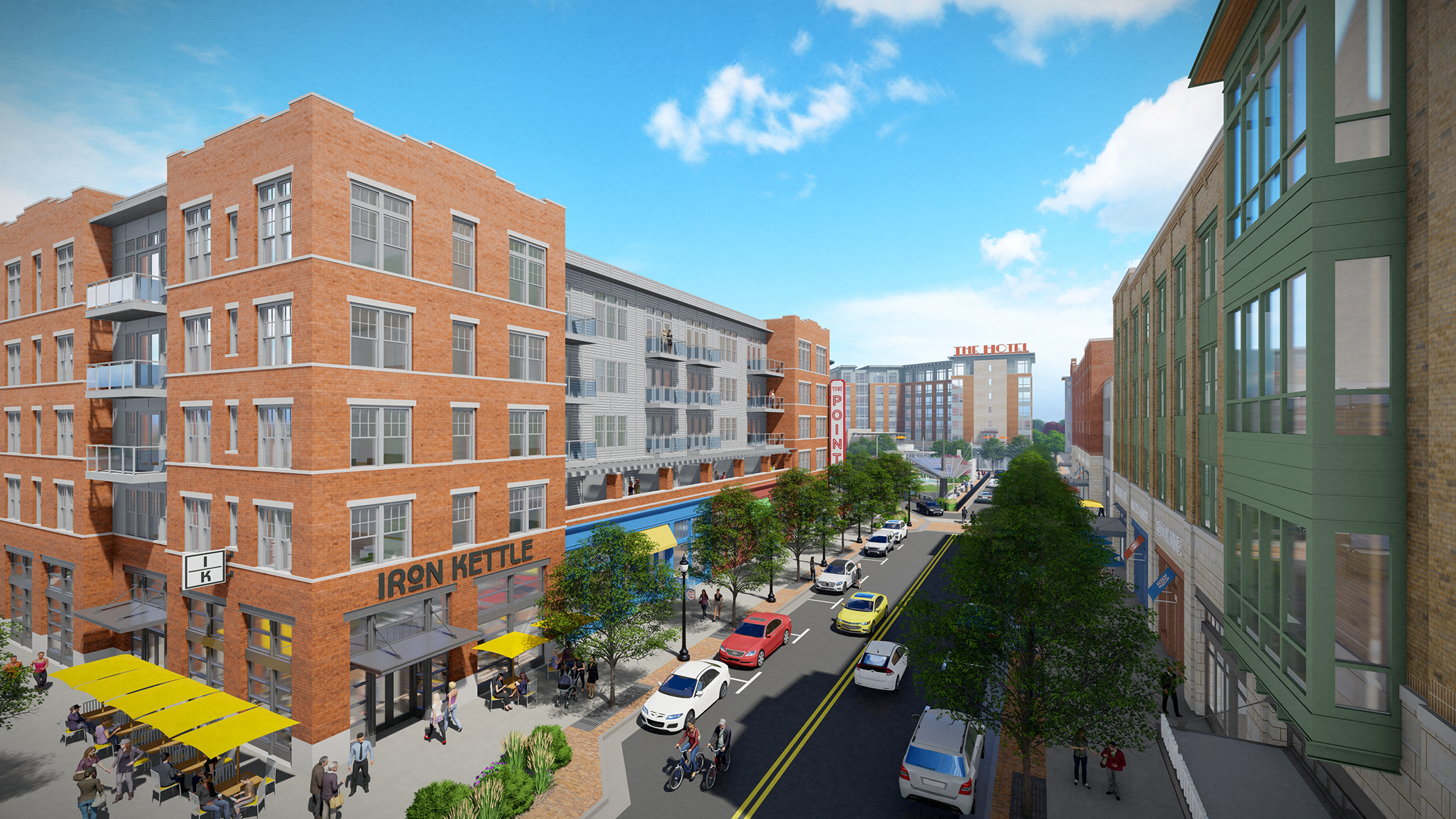
MidCity District’s Main Street-style vision
So far, RCP has built about 100,000 square feet retail, and tenants include Dave & Buster’s, High Point Climbing and Fitness and a Wahlburgers restaurant. Touchstar Cinemas, which had operated at the site’s predecessor mall, was relocating to a pad site to make way for the park and ampitheater. Now Grelier is uncertain whether the new movie house will be built. Meanwhile, RCP recently broke ground on a 296-unit apartment complex, and Grelier anticipates Hotel Indigo and Aloft Hotels to begin construction of the project’s lodging segment this year.
In some cases, developers that had designated parts of their mixed-use projects for national tenants now are reassessing plans in light of sluggish store expansions. Capital Group Properties is experiencing that at its Maynard Crossing mixed-use development on the site of a former R&D facility in suburban Boston. The endeavor calls for 306,000 square feet of retail, 180 apartments, 143 senior housing units, greenspace and ponds. A 70,000-square-foot Market Basket grocery that opened in December anchors the project, which also includes medical users, restaurants, gyms, services and retailers. About 182,000 square feet has been built or is under construction, and Capital Group plans to build two more retail sections totaling 56,000 and 68,000 square feet, respectively.
The developer initially envisioned junior anchors at those buildings but now is considering reducing the retail space to accommodate smaller tenants and to make way for self-storage, says vice president Robert Depietri. “Opening during the pandemic was a challenge, but going forward, the real challenge is going to be identifying the tenants of the future for these types of projects. But right now, the junior anchors are more or less out of the marketplace, so it’s a matter of adapting the space and making it more flexible.”
By Joe Gose
Contributor, Commerce + Communities Today